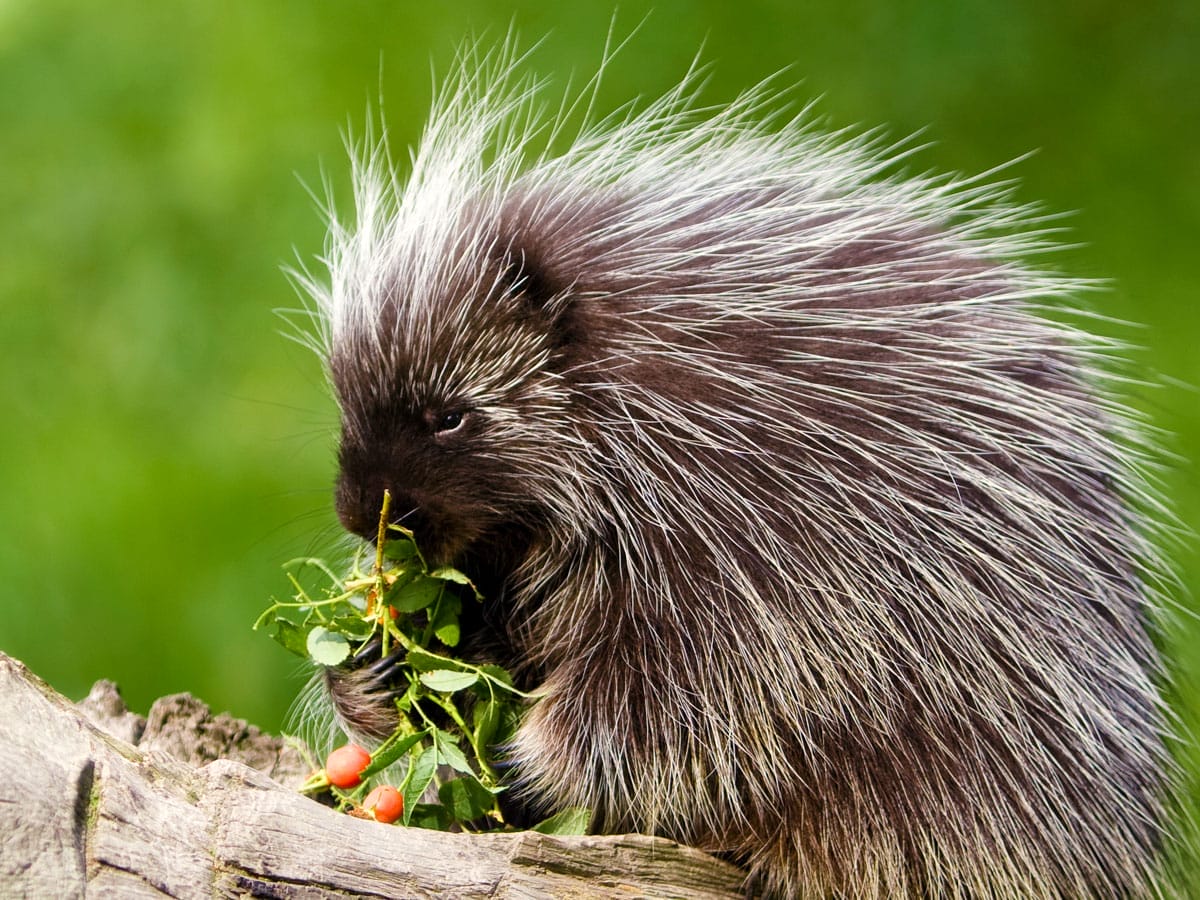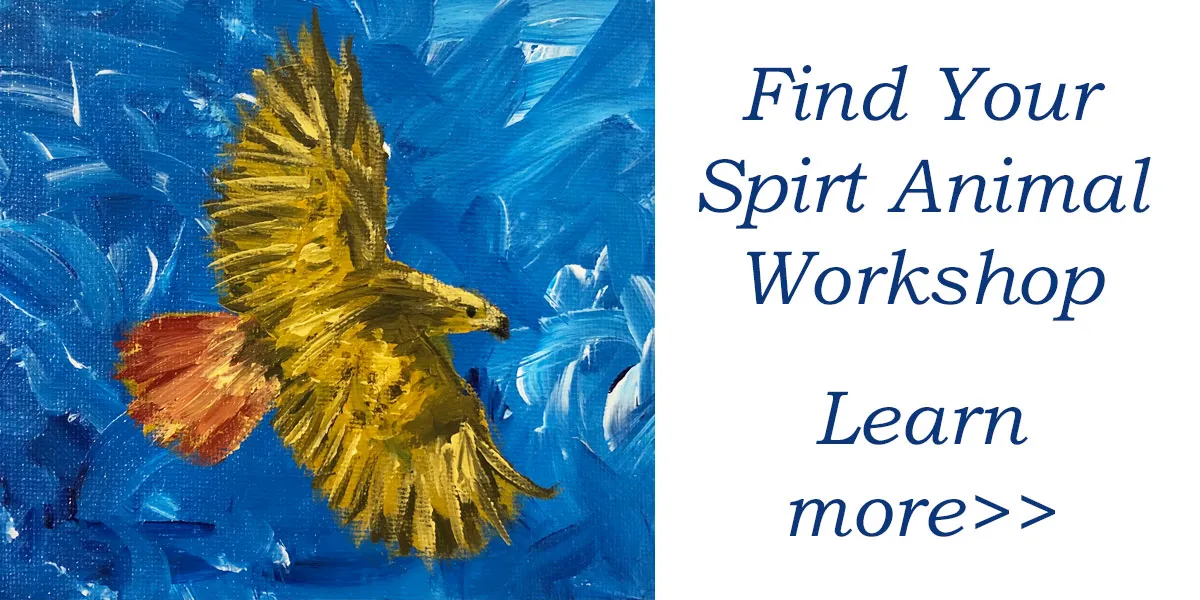Porcupine Spirit Animal
Intimacy in Porcupine Spirit Animal
Porcupine spirit animal speaks being carefree and careful. They are well defended by a coat of tens of thousands of quills that covers their bodies except for their faces and undersides. This lends to a relatively mellow and carefree life. They don’t have to run or hide from predators. However, this safety comes with a cost to intimacy.
Physical contact between porcupines is a delicate arrangement indeed. Get too snuggly or affectionate with your lover and risk getting quilled. Moms cradling a nursing baby brave quills unintentionally dispatched into their belly or teat – yikes!
Apparently porcupines know how to pull out the quills using their incisors and front feet [1], but for anyone who’s plucked quills from a dog’s snout, you know how arduous and painful this process can be. Even with the ability to remove quills, there’s still motivation to avoid them.
Porcupine quills have barbs on the end that make them difficult to remove. If the quills are not removed the barbs embed deeper and deeper into the flesh. This can prove lethal.
Porcupine spirit animal reminds us that when expose our soft places to someone we love, it is all too easy to catch a barb and be hurt. The meaning of porcupine spirit animal brings the wisdom of approaching intimacy delicately. Here a carefree nature must also be careful.
Handling a Delicate Situation
Sometimes in relationships it feels like no matter what we say, the other person is going to take it the wrong way and get hurt.
Porcupine spirit animal helps us handle delicate situations. They are a perfect ally for learning new levels of closeness. With their great sense of smell, porcupine spirit animal helps us discern when our loved one is feeling sensitive. There are times for approaching with caution. There is wisdom in choosing our words carefully out of care for another and ourselves. For hurting another with a misplaced barb could result in a barb in return. Now everyone is wounded.
If we’re not careful we can get too focused on the quills. These cycles of wounding in love cause melancholy and loneliness. Attempts to reach out and make things right seem futile. We become so afraid of making things worse that we stay away all together. Now we are the porcupines wandering alone, everyone giving us a wide berth.
Porcupine spirit animal is closely related to the outsider or outcast archetype.
Porcupines also occasionally stick themselves with their own quills [2]. This is a sharp reminder that sometimes the most harmful barbs come from our own inner critic. Porcupine spirit animal reminds us of the importance of being cautious and gentle in relating to ourselves as well.
Porcupines have a strong craving for salt. In alchemy, salt relates to the grief of tears and bitterness of loss. Porcupine spirit animal is no stranger to either. If you find yourself in a lonely place estranged from the person or people with whom you should be closest, it’s time to turn to porcupine for further instruction.
Giving Warnings in Phases
Porcupine spirit animal teaches us how to give warnings in phases. This helps us back off sooner to avoid dangerous barbs.
Many porcupines use the following warnings when threatened. They first raise their quills and turn their backs. Then they shiver their quills and chatter their teeth. Next, they emit a strong foul odor much like a skunk, and, lastly, they attack by backing up towards the threat and whipping their tails at it.
An interesting side note: Prehensile-tailed porcupines from Central and South America live in trees and don’t have spines on their tails, so their warnings look a bit different.
When working with porcupine spirit animal, it’s important to remember to watch for the subtle signals that someone is asking you to back off or move away. You will also be better off if you are able to offer warning signs of your own and if you use them deliberately and consistently. This is how we stay safe from most barbs in relationships.
Beyond the Five Senses – Proprioception
Porcupine spirit animal is associated with a special hidden sensory system in our bodies – the proprioceptive sensory system. Proprioception is how we sense pressure. Proprioception receptors are located in our muscles and joints. Our coordination and body awareness depends on them. When proprioception receptors sense pressure, we get information about where our bodies are in relation to the ground and other objects as well as about where to place our limbs and how to move our bodies.
The sense of proprioception can be under- or over-responsive. Someone who has an under-responsive sense of proprioception tends to play too rough, apply too much pressure, intrude into other people’s space, and run into things.
To have over-responsive proprioception is to shy away from physical touch, avoid closeness, and be claustrophobic in crowds or small spaces.
Given that the consequences of touching a porcupine’s quills are so high, porcupine spirit animal reminds us to pay extra attention to where our bodies (both physical and energetic) are in space. It’s time to learn more about your proprioceptive system and how it is responding.
If your proprioceptive system is under-responsive, some helpful things are to use a weighted blanket, to do some heavy labor or lifting, or to ask for a big hug or cuddle. Find a way to safely lean into your relationships and experience the pressure of an embrace.
For those of you with over-responsive (or more sensitive) systems, make sure to speak up when someone is getting too close, request that others ask for your consent before touching you, and give consent for them to approach only when closeness feels safe. Make sure you’re getting the physical and energetic space you need.
The article on the “8 Senses of the Body: the Hidden Sensory Systems” by Dr. Neff explains proprioception well [3].
Awareness of Danger Embedded in DNA
Many spirit animal guides equate porcupine spirit animal with innocence. They absolutely do have a sweetness them, a childlike face and gentleness.
And… It’s a lot more complicated than that. Innocence is equated with being “defenseless” and “naive”. Porcupines are neither. They are born with quills that harden within an hour to a couple of days (depending on the species). This means that they come into the world with tools to defend themselves and the ability to wield them.
Far from naive, their bodies innately know how to flex the muscles that raise the quills, roll into a ball to protect their face, and swat their tails at threats. Their bodies are not innocent to what it means to have to defend themselves. They come into the world armored, which means that porcupines have an awareness of danger embedded in their DNA.
Porcupine spirit animal relates to generational trauma and how it is passed down through our DNA. If you feel like you were born into a hostile world that required you be on alert from the beginning, call on porcupine spirit animal to remind you that you have the defenses you need to stay safe. Carrying an energetic coat of quills can help you relax. Move more slowly and intentionally through life like the ambling porcupine who knows nothing can shake them.
The meaning of porcupine spirit animal speaks to an ability to stave off bad characters either early in life or early in a project. Is someone trying to overpower you or find your weak spot? Porcupine spirit animal reminds us to safeguard our space and creations early and consistently.
Feeling Pestered?
The North American porcupine is the second largest rodent in North America. Rodents in general have a reputation for being pest species. Porcupines, unfortunately, are no exception. Like beavers, porcupines have two large front teeth that grow continuously throughout their lives. Porcupines gnaw on the hard, outer bark of trees to grind down their teeth and gain access to the soft, edible inner bark.
They have a bad rap with people because of their destructive habits with trees. Porcupines chew large rings of bark off around the base of a tree trunk – called “girdling”. This leaves the trees susceptible to disease and potentially death. This is especially problematic in commercial orchards and forests where trees are grown to produce goods for sale.
Where I live in the Rocky Mountains, porcupines climb ponderosa pine trees, strip bark off of limbs and gobble up the fresh shoots and branches. This causes the trunks of pine trees to split, sometimes upwards of twenty times. This disrupts the singular, straight trunks that people prize for lumber production, and causes what many people see as “ugly” and unhealthy crowns in trees. Hunting porcupines is unregulated in the United States. Some land owners shoot and kill porcupines to protect trees, but, in saving a few trees from a natural death, the overall health of the forest and the species in it are compromised.
Porcupine Spirit Animal Allowing for Imperfection
Porcupines are ecosystem engineers. The deformed, dead, and dying trees they make when gnawing creates diverse habitats for all kinds of animals from woodpeckers and bats, to insects and bears. Humans value living, straight and homogenous trees in a forest, but ecosystems require atypical shapes, heterogeneity, and dead or dying wood. This variation creates critical habitats.
To learn more about the North American porcupine’s ecosystem engineering, read this fact sheet (pdf download) [4].
Porcupine spirit animal reminds us that whatever destruction or deformity might be pestering us, that variation is critical to the overall health of our interior ecosystem. Not everything can be straight, perfect, and healthy in our lives all of the time, nor should it be. We need to allow for decay and imperfection, and maybe even help it along when we see the opportunity. Whatever is gnawing at you may turn into an opening for new life.
Porcupine Spirit Animal’s Affinity for Trees
New World porcupines across the South, Central, and North America have a close relationship with trees, relying on trees as a food source as well as a means to climb to safety. New World porcupines have very strong climbing skills.
All of these things ties the medicine of porcupine spirit animal to the world axis. The world axis is an archetypal symbol for the pillar that connects heaven and earth. Porcupines dig to find roots and climb to the top of tall trees to eat shoots. This shows an ability to navigate the full spectrum of experience, from the earthly to the heavenly.
When working with porcupine spirit animal, you have a chance to firmly grasp the channel between the spirit and material planes.
Ground Dwelling Porcupines
There are two main groups of porcupines around the world. The first is the New World porcupines of the Americas that we’ve already discussed. The second is the Old World porcupines that live in Africa, Asia, and Italy. Old World porcupines are strictly ground dwellers. Another main difference is that some species live in colonies in underground tunnel systems.
If you’re relating to an Old World porcupine spirit animal, you may need to practice handling delicate situations more often and make an effort to get out and find some much needed space. Community and physical day-to-day life can take up more of your focus.
Playfulness in Porcupine Spirit Animal
A common narrative about porcupine spirit animal is that they are playful. Porcupines don’t frolic like fawns. They don’t romp like kittens or wrestle like puppies. Their motions are slow and deliberate, quiet and reserved.
While a porcupine shuffling along is an adorable sight, it is not akin to the wild, expressive freedom of movement we associate with play.
However, play can also mean experimentation. This is the kind of playfulness that porcupine spirit animal embodies, especially when it comes to food. They are generalist herbivores, which means that they eat a wide variety of plant foods. For example, North American porcupines forage on evergreen needles and the inner bark of trees in the winter. In the other three seasons, they dine on berries, seeds, nuts, grasses, leaves, twigs, bushes, and roots.
If you are looking to align with the power of porcupine spirit animal, an intentional foray into culinary experimentation with different vegetable flavors and combinations utilizing all the parts of plants – roots, shoots, and leaves – can be a fun way to do this.
References
[1] https://www.maine.gov/dacf/php/gotpests/othercritters/factsheets/porcupine-vt.pdf
[2] https://safarisafricana.com/animals/porcupine/
[3] https://neurodivergentinsights.com/blog/8-senses/
[4] https://www.oregon.gov/odf/Documents/forestbenefits/fact-sheet-porcupines.pdf
[5] https://nationalzoo.si.edu/animals/north-american-porcupine





A friend jokingly said one day that I am like a porcupine. It struck me that there was truth to it. Now I know why, thanks to your post! Thank you, Stacey, for sharing your wisdom and insight!!
Your most welcome JJ! Thanks for sharing your feedback. I’m glad to hear my insights on porcupine spirit animal resonated with you. Sending Blessings,
Stacey